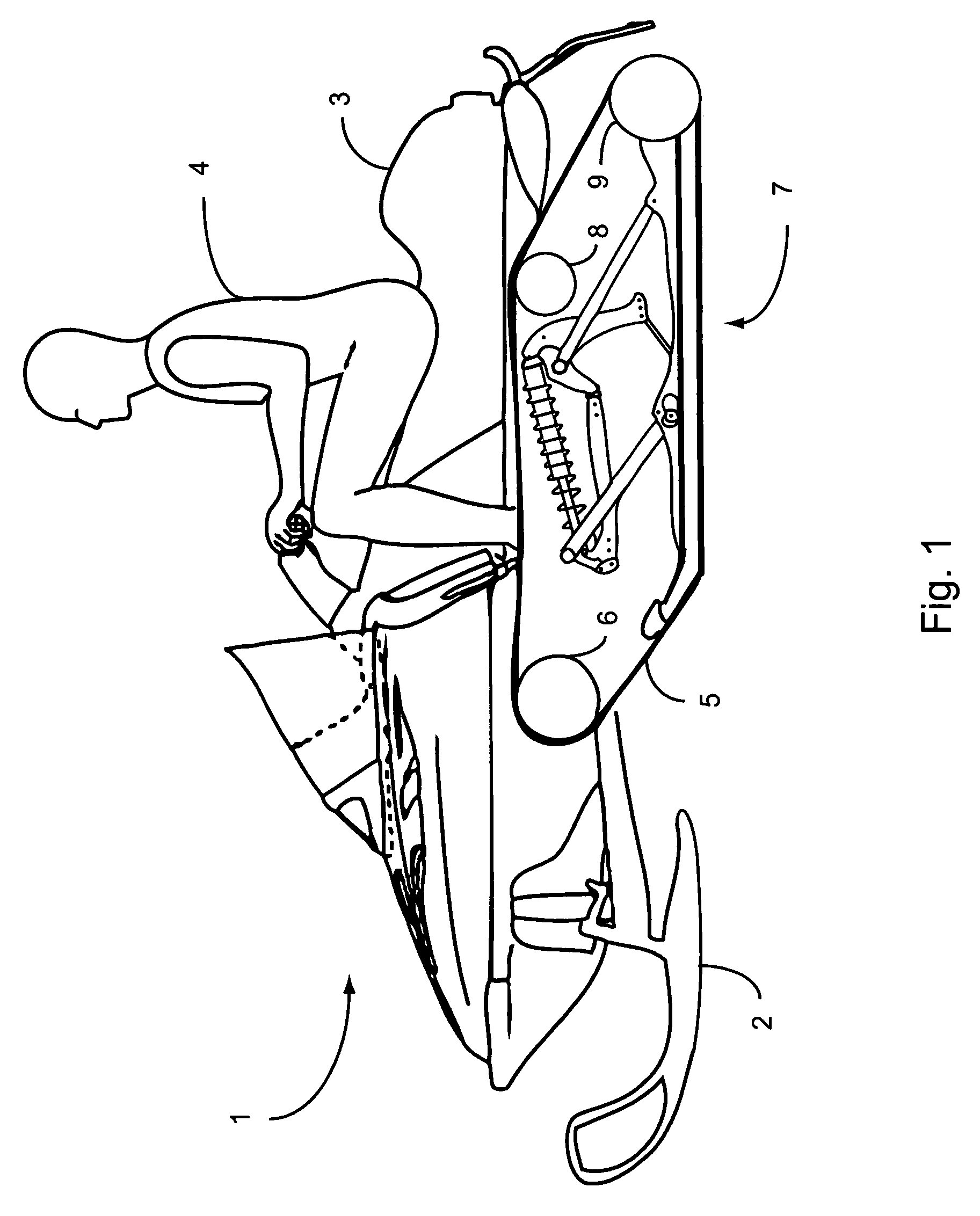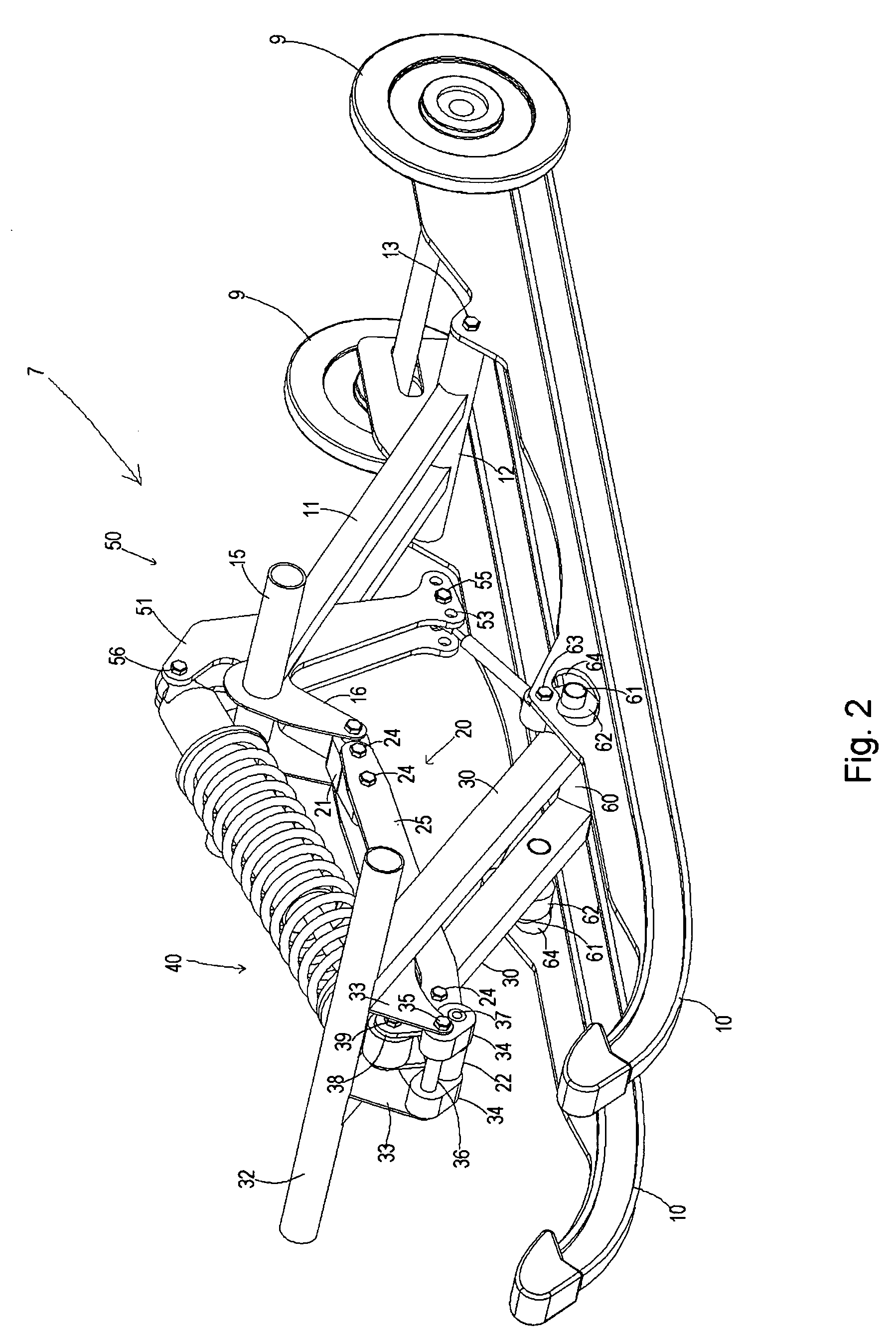Snowmobile track suspension
a track suspension and snowmobile technology, applied in the direction of endless track vehicles, vehicle components, vehicles, etc., can solve the problems of poor resistance to bottoming over large bumps, inability to land after landing, and inability to achieve the effect of reducing the amount of rail pitch
- Summary
- Abstract
- Description
- Claims
- Application Information
AI Technical Summary
Benefits of technology
Problems solved by technology
Method used
Image
Examples
Embodiment Construction
[0039]Referring to FIG. 1, a snowmobile 1 is shown generally with a pair of front skis 2, a seat 3 for supporting a rider 4 and a rear track 5. The rear track 5 is driven by a front drive pulley 6 and supported by a track suspension 7 according to the present invention. The track suspension 7 is mounted to the underside of the snowmobile 1 beneath the seat 3 within a tunnel that partially encloses the track 5, drive pulley 6 and suspension 7. A pair of running boards (which have been omitted to better show the invention) for supporting the rider's feet are provided on either side of the tunnel. The drive pulley 6 shown in FIG. 1 rotates in a counterclockwise direction. During throttle-induced acceleration of the snowmobile 1, the tension of the track 5 increases between the drive pulley 6, upper idler 8 and lower idler 9. The increased track tension causes the suspension to compress, particularly at the rear, and the lower idler 9 to move toward the underside of the snowmobile. This...
PUM
 Login to View More
Login to View More Abstract
Description
Claims
Application Information
 Login to View More
Login to View More - R&D
- Intellectual Property
- Life Sciences
- Materials
- Tech Scout
- Unparalleled Data Quality
- Higher Quality Content
- 60% Fewer Hallucinations
Browse by: Latest US Patents, China's latest patents, Technical Efficacy Thesaurus, Application Domain, Technology Topic, Popular Technical Reports.
© 2025 PatSnap. All rights reserved.Legal|Privacy policy|Modern Slavery Act Transparency Statement|Sitemap|About US| Contact US: help@patsnap.com



